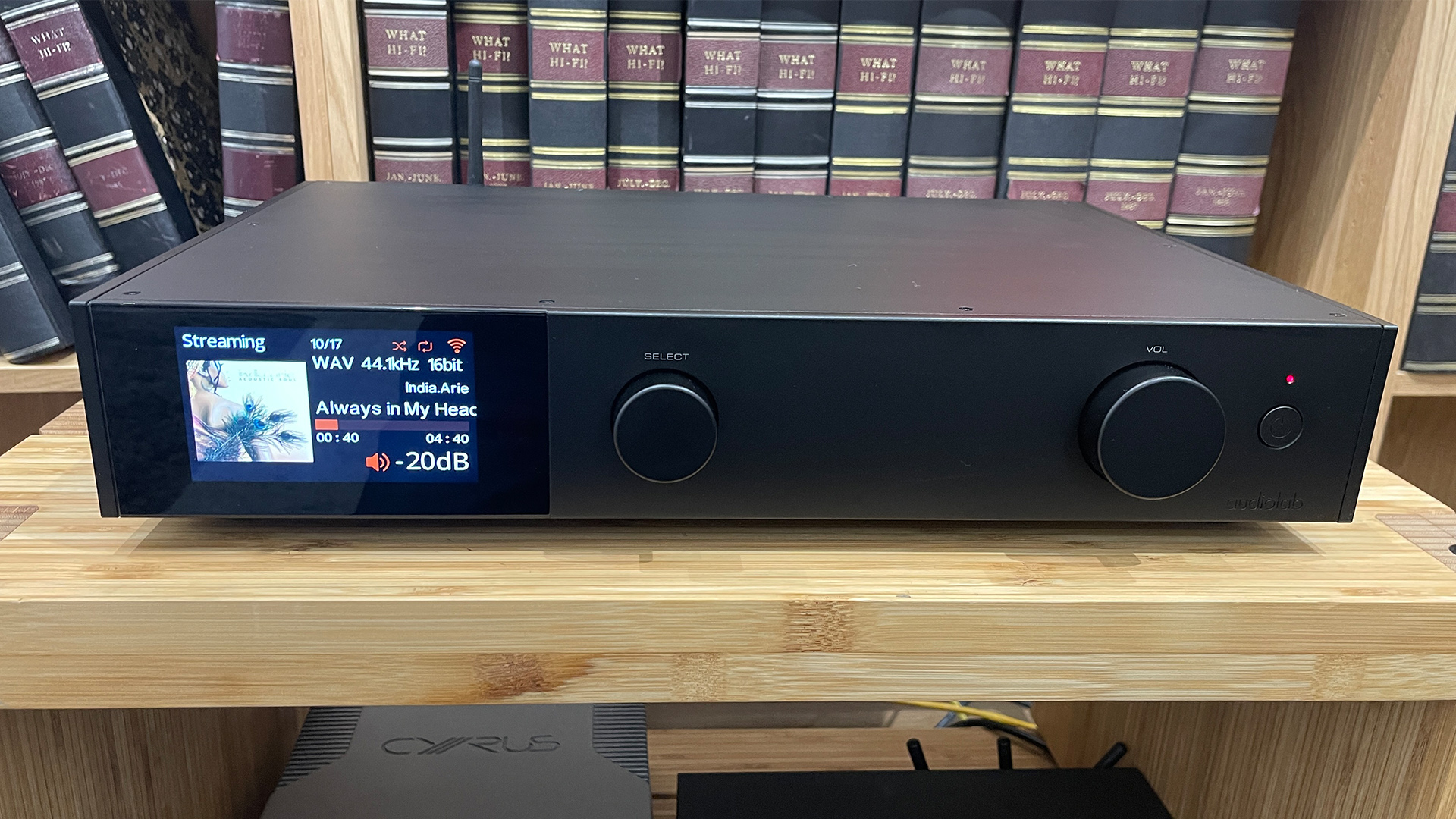What Hi-Fi? Verdict
The 9000N is a terrific performer that delivers class-leading precision and insight, though it lacks some common features
Pros
- +
Impressively even and insightful presentation
- +
Expressive dynamics
- +
Fine build and finish
Cons
- -
No Bluetooth or Chromecast support
- -
No coax or optical digital inputs
Why you can trust What Hi-Fi?
Audiolab has become a go-to brand for us when it comes to affordable music streamers. Based on the Play-Fi streaming platform, the company’s offerings have typically delivered a balanced and insightful performance while being easy to use. The introduction of the range-topping 9000N marks a shift in ambition, being pitched at a properly premium price, and with a change in streaming platform to one from high-end specialist Lumin.
Some may wonder why Audiolab couldn’t just make its own streaming platform, but developing and then maintaining one (as new feature requirements arise) is such a complex and expensive task that most hi-fi companies prefer to buy-in ready-made solutions from specialist suppliers in the area. Lumin is a good choice as it is firmly established as a manufacturer of well-regarded premium streaming products but also deals with a client list that includes prestigious brands such as TEAC and its high-end offshoot, Esoteric.
Features & build
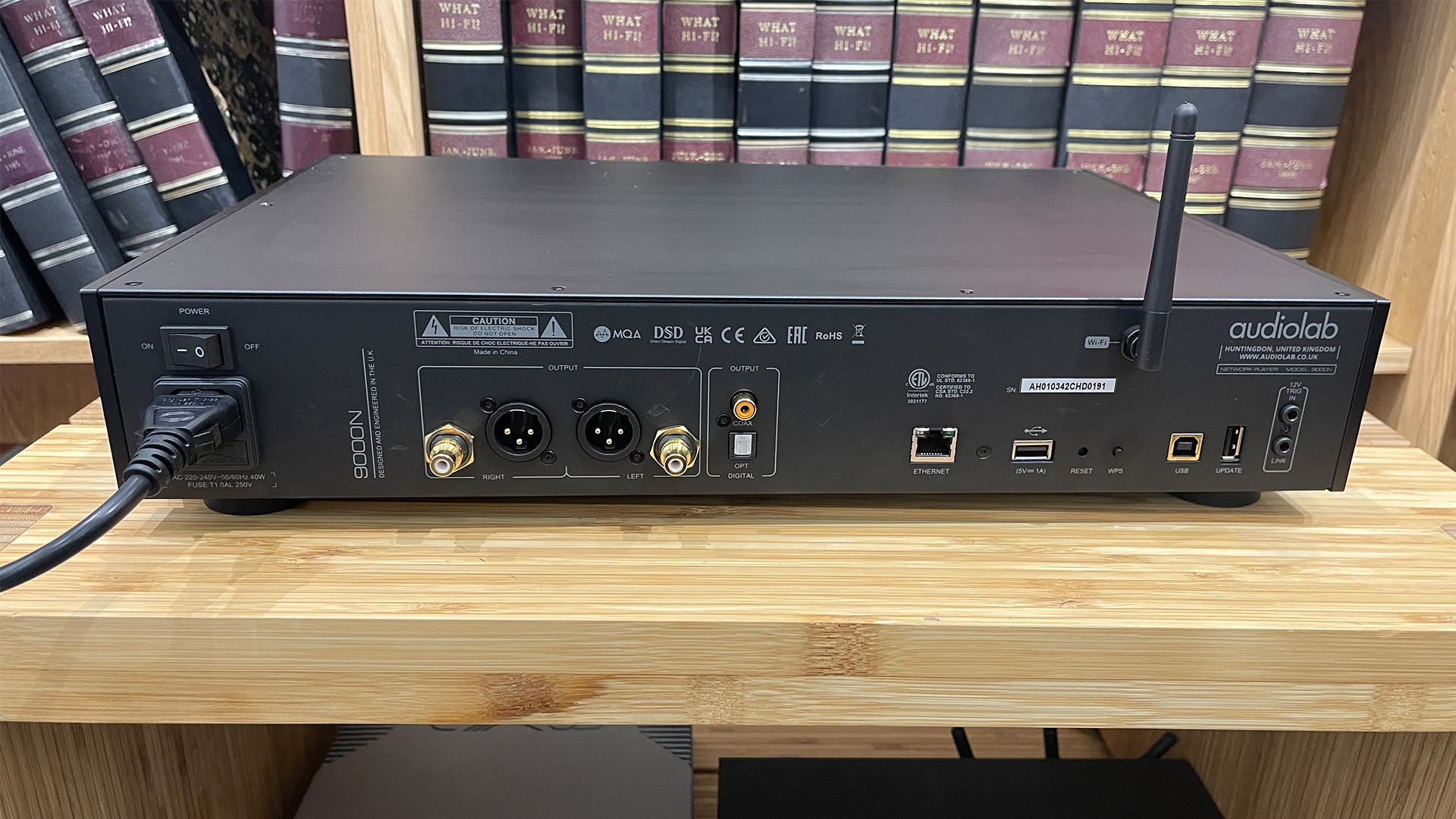
The Lumin-based platform gives the Audiolab 9000N most of the functionality you would expect from a modern streamer. It can play music files from across your home network and stream songs from the likes of Spotify Connect, Tidal Connect, Qobuz and Tunein Radio. The platform is Roon Ready and Plex compatible. File compatibility is extensive, taking in 32-bit/768kHz PCM, DSD512 and MQA. We think that should be enough to cope with most people’s music collections.
There are notable omissions, though. Those looking for Bluetooth connectivity are in for a disappointment and Chromecast isn’t on the menu either. Apple Airplay 2 is, however. The lack of Bluetooth is interesting as Audiolab claims that this common connection method doesn’t have a place in such a premium streaming product due to performance limitations. We would disagree, as Bluetooth always proves a convenient connection when friends or family come around and a bit of music is needed. Of course, the workaround is to have an amplifier with Bluetooth capability built-in, as the 9000N’s partnering integrated does, but that isn’t ideal.
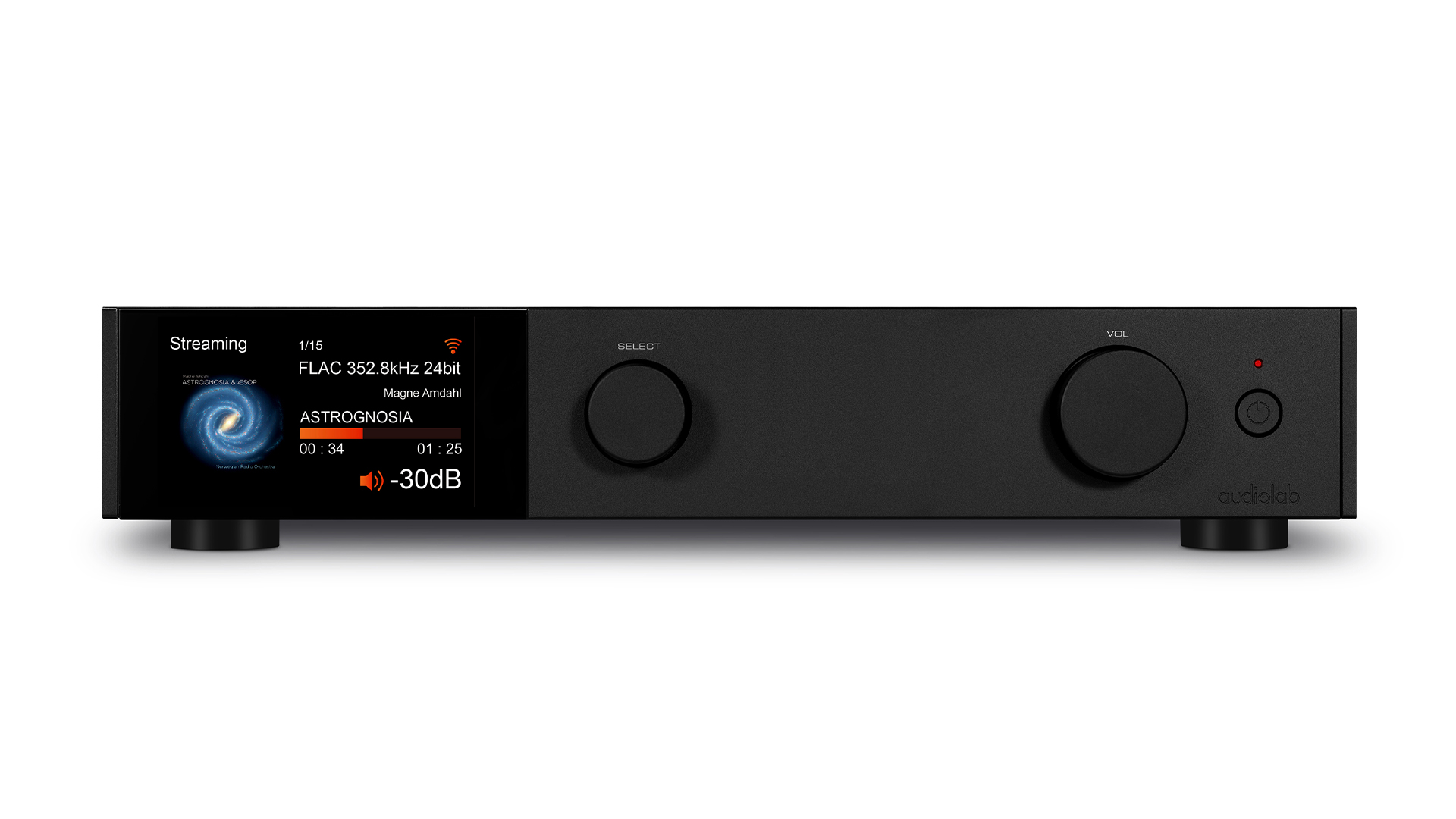
Sources Network streaming
Network Wi-fi and ethernet
Inputs USB Type B, USB Type A
Outputs Single-ended RCA, balanced XLR, optical, coax
Headphone output? No
Max file resolution 32-bit/768kHz, DSD512, MQA
Streaming features UPnP, Spotify Connect, Tidal Connect, Qobuz, Tune in radio, Apple Airplay 2
Dimensions (hwd) 9.4 x 34 x 34cm
Weight 4.8kg
There is a lot more to the 9000N than just the Lumin-based streaming module. Audiolab has a great deal of experience designing digital-to-analogue circuitry, and at the heart of the 9000N sits an eight-channel ESS Sabre ES9038 PRO DAC chipset. Those eight channels are configured to work in stereo to minimise noise and distortion. Elsewhere, care has been taken over filtering, clocking accuracy and providing low-noise and stable power feeds to all the circuitry.
It is a shame that Audiolab hasn’t made all this clever DAC technology more accessible. It is fine if you want to connect your computer (USB Type B on the rear panel) or external USB storage (USB Type A, also on the rear panel), but there is no provision for coax or optical inputs. While not a deal breaker for us, we still see it as a missed opportunity, particularly because, spoiler alert, the 9000N’s conversion section is a good one. Even so, if you do get to the point where you want to upgrade the Audiolab’s performance, its coax and optical digital outputs will come in handy to feed into an external DAC.
The 9000N’s build quality is as good as we’ve come to expect from Audiolab. This is a solid, well-finished unit that’s relatively easy to use. There are two finish options: black and silver. On the front panel, you will find a crisp 4.3-inch LCD that comes in handy when we go through the unit’s set-up menus. This display can also be set to display analogue or digital signal level meters to add visual interest.
You can tweak the sound through the digital filter settings (five options), and if you are listening to MQA files, decide on how you want them processed through the Audiolab’s analogue and digital outputs. Given Tidal’s move away from MQA, it feels as though the format is less relevant than ever, though we accept some may have stored MQA files they want to make the most of.
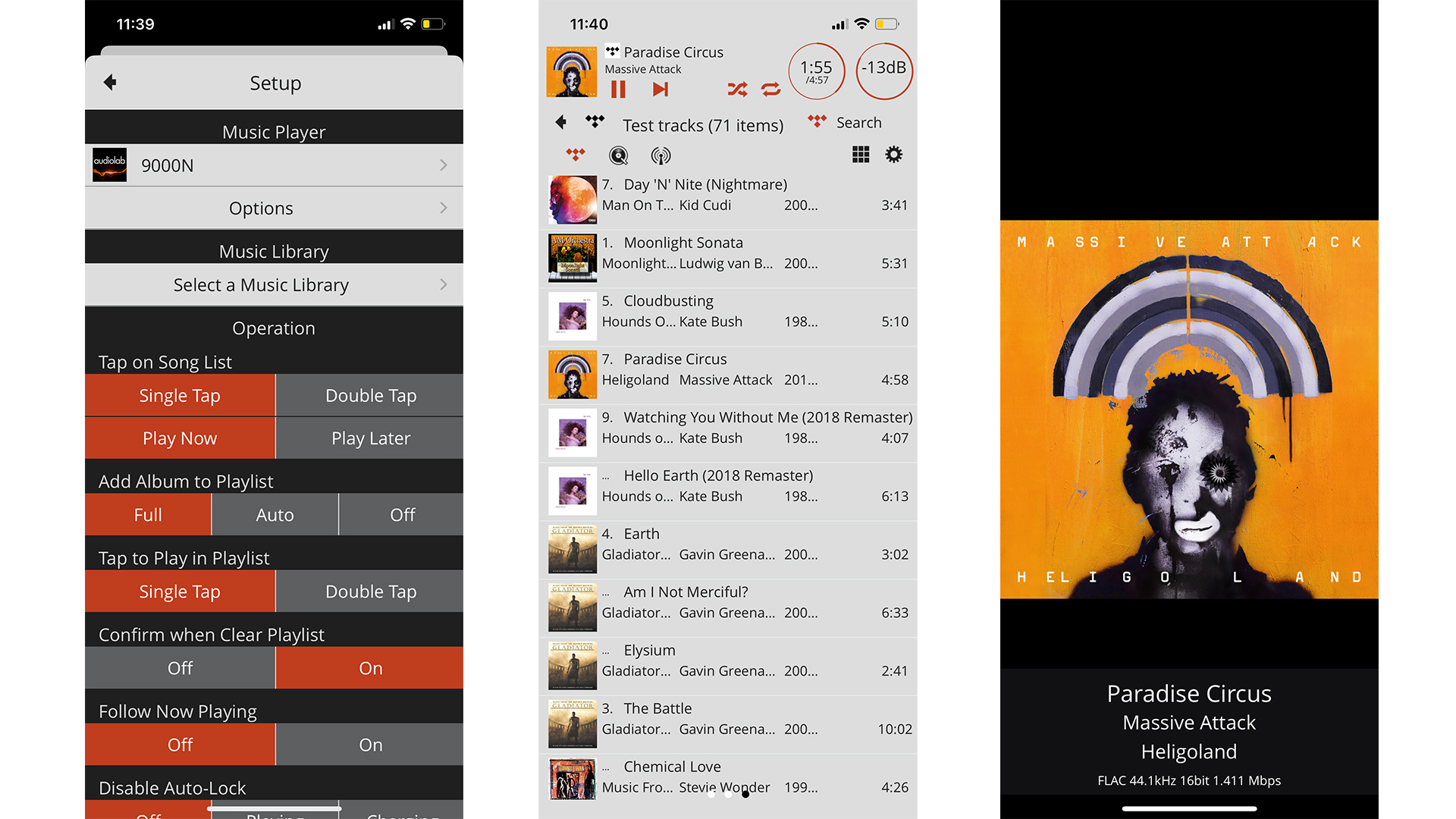
We play around with the filter options and find ourselves alternating between the default Linear Phase (Slow Roll-off) setting and the Minimum Phase (Slow Roll-off), with the latter preferred more often thanks to its slightly more punchy and dramatic presentation. As is the case with these things, the differences between the five settings are slight and the choice depends as much on your taste and system as it does anything else.
The Lumin-based dedicated Audiolab 9000N app proves stable and fairly intuitive, though its presentation can look cluttered. It doesn’t take long before we are up and running with the app, taking a few minutes to catalogue the music on our Naim and Melco NAS units the first time we connect.
We start by using the Audiolab in our reference system of Burmester 088/911 MkIII amplifier and ATC SCM50 speakers, but also try it with more price-compatible products including Naim’s Nait XS3 and Arcam A15 integrated amplifiers, PMC’s Prodigy 5 floorstanders and KEF LS50 Meta standmounters.
Sound

This Audiolab does well, regardless of the partnering system. The 9000N’s clean, large-scale and spacious presentation differentiates it from class rivals such as Naim’s ND5 XS2, which delivers music in a more robust and condensed manner. The Audiolab doesn’t sound cluttered even when confronted by a complex piece of classical music such as Orff’s Carmina Burana, and retains an enviable degree of composure as the music explodes from quiet sections to full-bore crescendos.
Tonal neutrality is impressive as is the streamer’s ability to resolve the finest of details. Instrumental and vocal textures are rendered with care, and its confident handling of dynamic nuances keeps the listener gripped. We can’t complain about stereo imaging either, as the 9000N delivers an expansive and stable soundstage packed with sharply focused instruments and sounds.
As we switch to Billie Eilish’s Hit Me Hard And Soft set, the 9000N continues to sound right at home. Its Naim rival makes more of the album’s upbeat tracks with an excellent combination of drive and punch that eludes the Audiolab, but the 9000N counters with greater precision and clarity while still conveying the energy in the music well. It is still a fun listen that captures the varying moods of the tracks nicely. Importantly, there is enough in terms of drama and subtlety to keep us listening all the way through, which is always a good sign. This album also shines a light on the Audiolab's taut bass and surefooted way with rhythms.

Making use of the USB (Type B) input with our resident MacBook Pro (loaded with Audirvana music-playing software) proves that the internal digital-to-analogue circuitry is hugely capable. Its performance is consistent with that heard using the streaming section, delivering the same pleasing blend of precision, resolution and control. There is plenty in the way of attack and punch when the music demands, too.
As we switch from Motown favourites from Marvin Gaye, to Kate Bush’s Hounds Of Love and Mahler’s Symphony No.3, it becomes clear that the 9000N is something of a musical chameleon. It is impressively transparent and shifts character depending on the recording being played. We haven’t come across a streamer at this level that is as capable in this respect.
Verdict
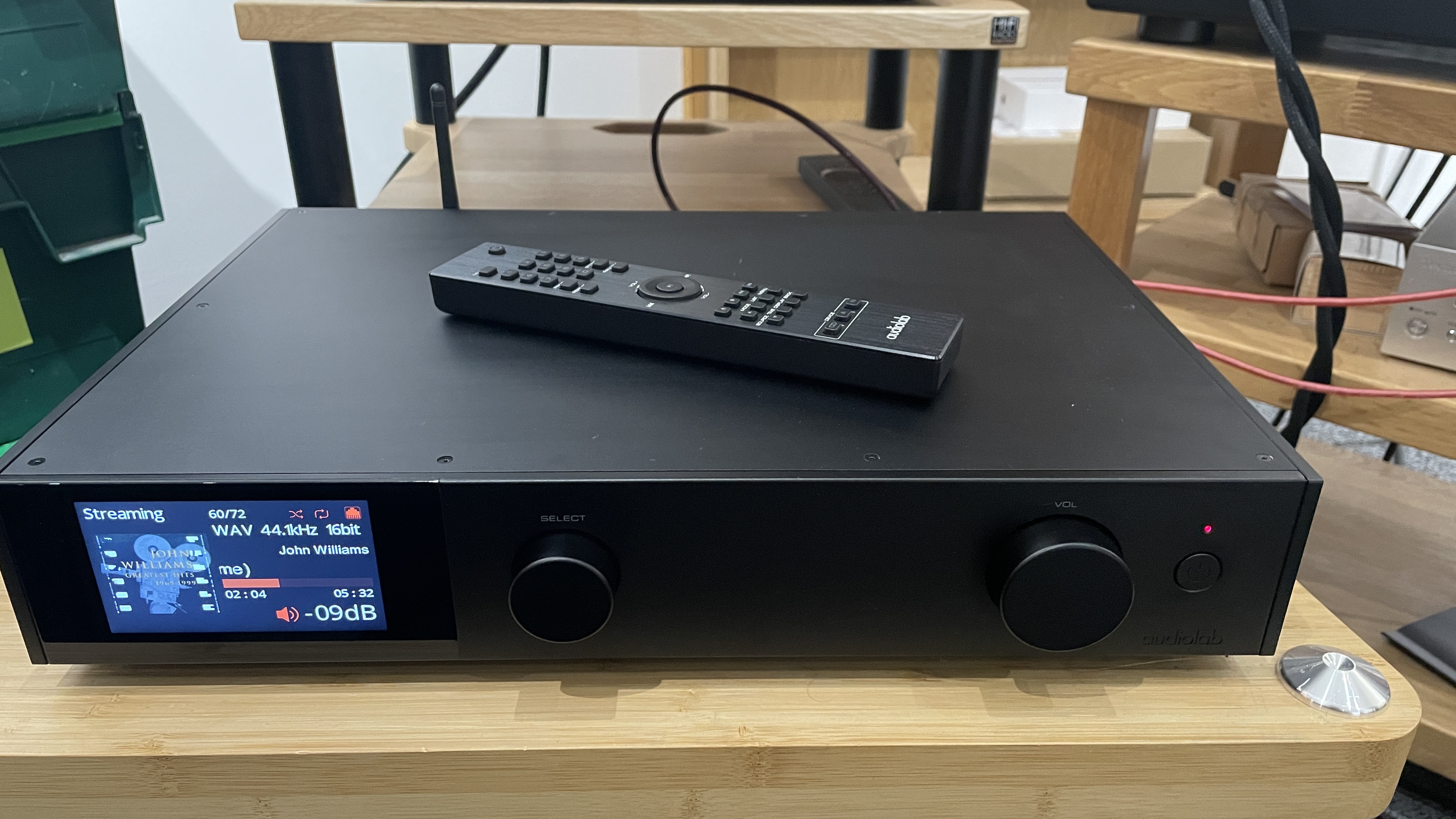
The 9000N proves that Audiolab is capable of scaling its streaming expertise to more premium price points. This is a strong performer that ticks pretty much every box as far as sound quality is concerned. We have a few issues with the lack of certain features, but beyond that there is little to complain about here. The established class champions need to worry.
Review published: June 2024. Review updated: November 2024.
SCORES
- Sound 5
- Build 5
- Features 4
MORE:
Read our review of the Naim ND5 XS2
Also consider the NAD C658
Best music streamers: top network audio streamers tested by our experts
What Hi-Fi?, founded in 1976, is the world's leading independent guide to buying and owning hi-fi and home entertainment products. Our comprehensive tests help you buy the very best for your money, with our advice sections giving you step-by-step information on how to get even more from your music and movies. Everything is tested by our dedicated team of in-house reviewers in our custom-built test rooms in London, Reading and Bath. Our coveted five-star rating and Awards are recognised all over the world as the ultimate seal of approval, so you can buy with absolute confidence.
